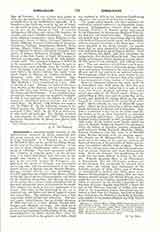

Somaliland, a triangular-shaped territory in the northeastern extremity of Africa, projecting into the ocean towards the Island of Socotra; its apex is Cape Guardafui. It is bounded on the north by the Gulf of Aden, on the east by the Indian Ocean, on the west by the hills of Harrar and Shoa. It has an area of about 356,000 square miles, and a population of 1,000,000. The Greek navigators called it the “Country of aromatic gums”; at the present time it is called Somaliland from the name of the people who inhabit it. Its exploration was begun in the sixteenth century by Portuguese employed in the service of Ethiopia, was interrupted for a long time, and was recommenced in the nineteenth century by Burton, von der Decken, Brenner, Menges, Georges Revoil, etc. Our knowledge of it is still imperfect: the severity of the climate, aridity of the soil, lack of means of transportation, and above all the fanatical, treacherous, and thieving character of the natives have always made Somaliland one of the most inhospitable places of residence in the world. The country has more or less the appearance of a desert. The lower section bordering on the sea is naturally dry and barren and barely supports a poor and scanty flora. The mountain slopes have a fine vegetation, which includes the coffee-tree. The central region, called Ogaden, has an average elevation of 3000 feet and is a large plateau covered with steppes and affording pasturage. The chief rivers are the Daror, which empties into the Indian Ocean between Cape Guardafui and Ras Hafun, Webi, which, descending from the Harrar district, flows along the coast and loses itself in the ground, and Juba, whichwas explored in 1873 by the American Chaille-Long who was in the service of the Khedive of Egypt.
The people called Somali, who have remained untouched by exterior influences, are remarkably homogeneous. Ethnographers connect them with the Ethiopic, Cushitic, or Hamitic group represented by the Ethiopians, or Abyssinians, Bedjas or Nubians, the Danakil, the Oromo or Gallas. Taken generally the Somali type is very interesting: slight in figure, with limbs well-proportioned, regular and remarkably delicate features, wavy hair, a fine black skin. They dress elegantly in the classic manner; the poorest know how to carry themselves with a naturalness, ease, and pride that are not lacking in dignity. They are intelligent, but fickle, and their industries are rudimentary; they disdain tilling the soil. They work chiefly as herdsmen, fishers, boatmen, traders; above all they prefer travel, adventure, and robbing strangers. They are, moreover, divided into a great number of clans forming three or four main groups which unite and separate according to the vicissitudes of the alliance and of war and have no national cohesion. Their language, which has been made known by the Capuchin missionaries, is related to that of the Gallas; it has incorporated a large number of Arabic idioms.
However, European influence has made itself felt in Somaliland since 1829 when the Red Sea was first used as a route to India; but it is only of late years that France, England, and Italy have taken actual possession of the Somali coast. France acquired Obok in 1882, then took the entire Bay of Tajurrah, and finished by taking Jibuti as the chief town of the “Protectorate of the French Coast of Somali”, which contains an area of about 80 square miles. Jibuti has been united by a railway with the fertile districts of the Harrar and of Abyssinia. England is established to the east on the entire coast facing Arabia as far as Cape Guardafui; its principal towns are Zeila and Berbera. Lastly, Italy, called by England to these latitudes in 1894, occupies the principal towns of the eastern coast known under the name of Benadir (Arabic Al Banader, the gateways), where the Sultan of Zanzibar formerly maintained small garrisons: Obbia, Warsheik, Mogdishu, Merka, Barawa, Kisima-yu (the last name is of Swahilic origin, Kisima meaning wells, yu meaning upper). The Somali are all Mohammedans. Those of the north and of the towns on the coast are rigorous and fanatical observers of the principles of Islam and despise “the infidels” whether white or black. The Somali of the interior unite some of the beliefs and practices of ancient fetishism with their Mohammedan faith. There are, however, few populations of the world that are more difficult to bring to the Gospel. Properly speaking there is no Christianity in Somaliland. The few Christians, perhaps one or two hundred, that can actually be counted, have come from the schools and orphanages of the Catholic missions of Aden, Jibuti, and of Berbera. As Somaliland is divided into three zones of influence, French, English, and Italian, there are three distinct mission centers: the French Somali coast is under the care of the Vicariate Apostolic of the Gallas, which is entrusted to the French Capuchins of the Province of Lyons; English Somaliland is under the care of the Vicariate Apostolic of Arabia, also confided to the Capuchins; Italian Somaliland was detached in 1904 from the Vicariate Apostolic of Zanzibar, erected into the Prefecture Apostolic of Benadir, and confided to the ancient Order of the Holy Trinity or Trinitarians.
A. LE Roy.

